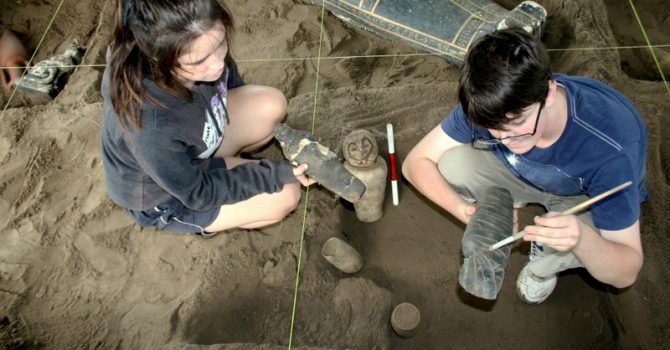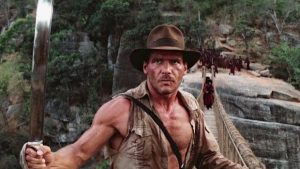
To many people archaeology embodies adventure, excitement, very old things and, of course, thanks to the Indiana Jones franchise, unfortunately Nazis. The image of Indiana Jones, Hollywood’s archetypal archaeologist, has been burned into the minds of the “baby boomer” generation. These days, finding anyone under the age of 20 who has seen these films is an adventure in itself. Archaeology is so much more than “digging up old stuff” and putting it into a museum; it plays an important role in society, more than most people realise. Instilling that idea into a student’s mind is a definite challenge.

Curiosity plays an important role in the public perception of archaeology and history. Why are people so fascinated by King Tut and the Pyramids? It has to be more than, “they look pretty cool” right? Well, that’s because it is. Human beings have a natural desire to know more about where they have come from, especially if it relates to themselves. There is no doubt that there is economic value associated with archaeology as well. Museums all over the world are filled daily with curious minds, both young and old, there to soak in the treasures on display. Families flock to sites all over the world to bask in the glory of the past, all contributing to a global archaeological tourism, which brings us to perhaps the most important trait of archaeology; the ability to bring people together. The past, our common history, is one of those things that inspire a sense of belonging and unity. Ethnic identity is often established in the past, and while examples have been used as political tools and justification for terrible acts in recent history, this very rarely dissipates in the minds of a nation’s citizens.

At the Abbey Museum, students are introduced to the idea that an archaeological site is a puzzle, with information and evidence as the puzzle pieces. Like all social sciences, archaeology requires critical thinking, a skill which doesn’t always come naturally and simply asking “why” and “how” is not enough. As students uncover artefacts, they are encouraged to think about the life of the object and the person that may have made it, before considering the evidence in a wider context. As the puzzle comes together and takes shape, the excitement grows. Intrinsic curiosity plagues the site, as more and more pieces begin to reveal a story which the students develop themselves. Students learn more about themselves as they learn about the past. They connect with a cultural, ethnic and global historical identity. This is the most rewarding part of teaching the value of archaeology.

The Abbey Museum has around 6000 school children participating in our programs each year. It is a rare occasion that any of them have a true appreciation, let alone understanding of archaeology and with each passing year, the number becomes smaller. The ones who continue with their interest in the field develop an everlasting passion for the past, carrying on the cycle.
After all, my first experience with archaeology was at this very institution; participating in a school dig and putting pieces of my own puzzle together.

